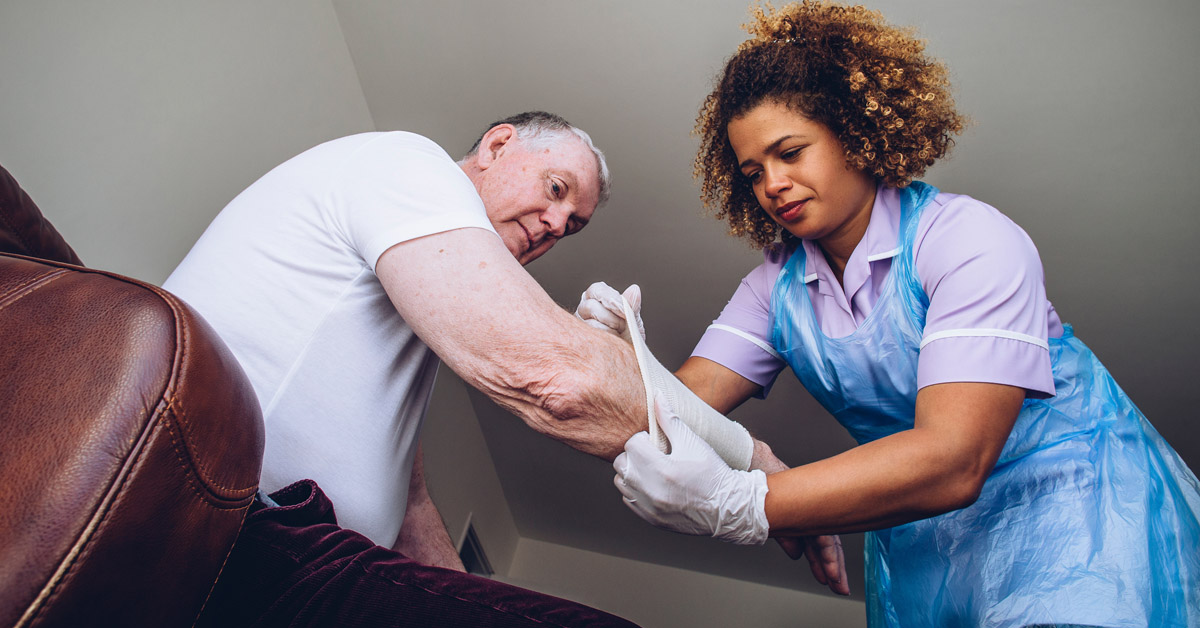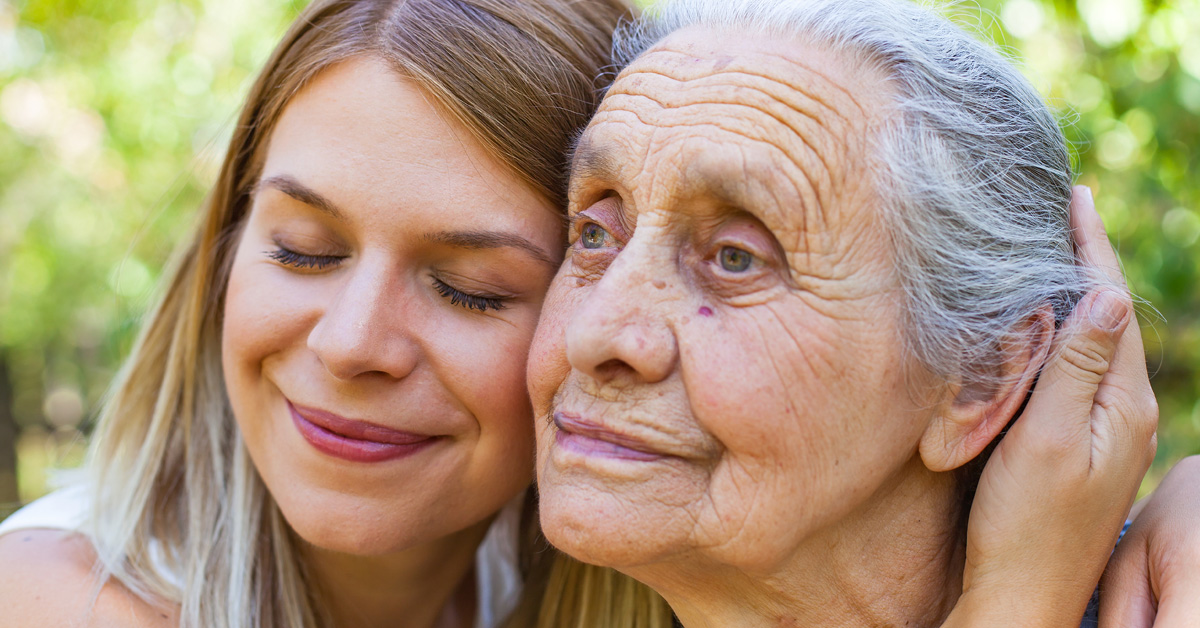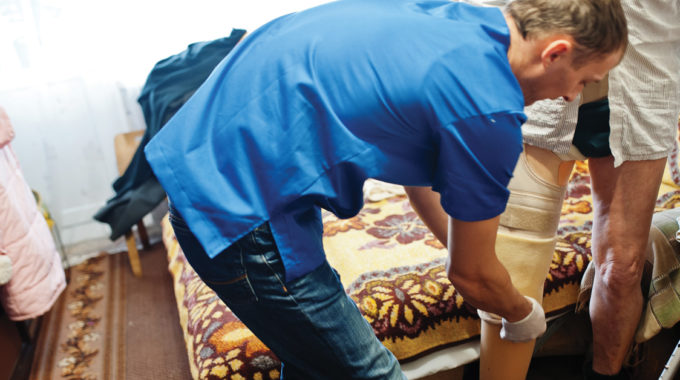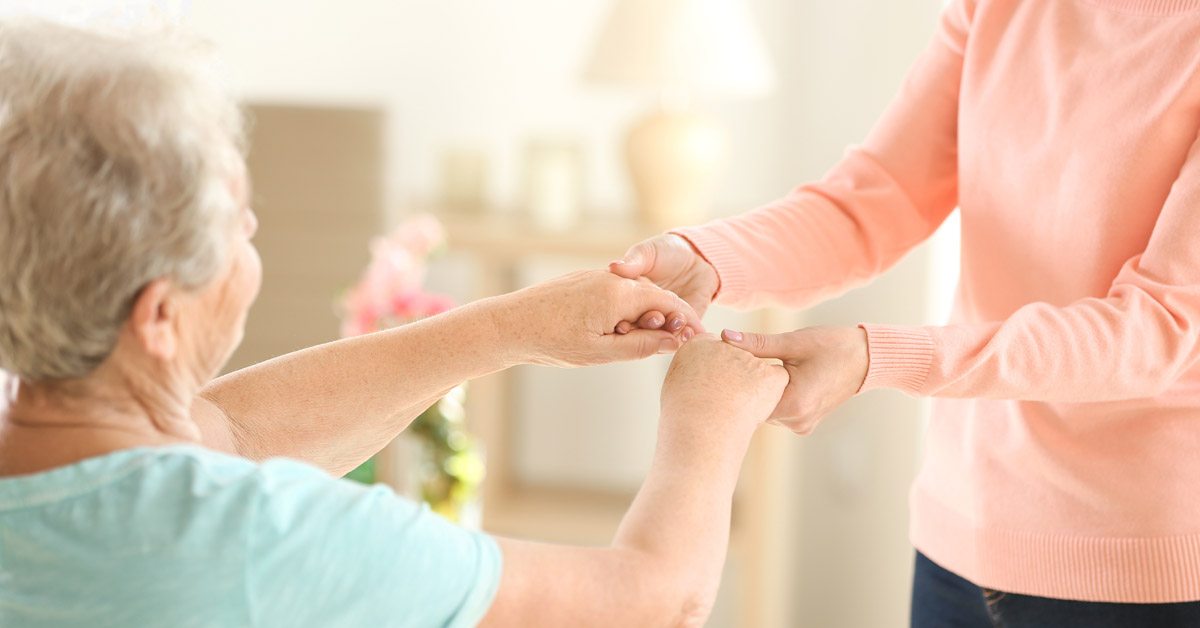
Complex Wounds: Home Health Found Safe and Effective
A team of researchers recently compared the outcomes between three settings for complex wound care: home health, telemedicine, and outpatient wound clinics.1 In telemedicine, patients and caregivers participated in online visits with a wound care expert. Patients receiving outpatient care at a wound clinic tended to achieve faster healing, but in practical terms, the three settings produced similar outcomes. What does this mean for care planning?
At six months, the percentage of wounds healed were not statistically different between settings: telemedicine 68.5%, home health 64.4%, and wound clinic 62.9%. The average time to heal favored wound clinics: wound clinic 55.8 days, home health 69.3 days, and telemedicine 66.8 days. The takeaway from this research is that doctors can refer to home health for wound care and trust that the home environment with home-visiting, wound-care-experienced clinicians can be a safe and effective mode of wound care. As long as good home health is delivered under doctor’s orders and in collaboration with the doctor, the effectiveness of home health can be on par with that of outpatient wound care. The most appropriate settings will be more dependent on patient characteristics. Additionally, in practice, patients can receive care in a combination of settings with continuity of care: outpatient doctor visits, home visiting nurses, and telehealth can all be combined to provide patients with the best care setting for each procedure.
Telehealth and Wound Care
Pre-pandemic, 1% of Medicare beneficiaries reported using telehealth. By 2020, 27% of them had used telehealth.2 The current study lends encouragement that patients and caregivers may be able to self-manage even complex wound care via video appointments with a wound care specialist. However, in practice, many doctors emerged from the pandemic finding that video appointments were not effective with elderly patients. More than half of telehealth was delivered to Medicare beneficiaries by phone, as appointments scheduled for video meetings often reverted to phone calls after patients had difficulty participating.
Who Should Receive Home Health Referrals for Wound Care?
- Patients who need the assistance of a device or person to leave the home and who, therefore, find it difficult to leave the home.
- Patients who would benefit from clinician services with Medicare paying 100%, regardless of deductibles or copays.
- Wounds taking longer than six weeks to heal.
- Infected wounds.
- Wounds where there is a likelihood of developing complications: diabetes, vascular insufficiency, neurologic deficits, advanced age, edema, limited mobility, incontinence, cognitive impairments.
- Wounds where the doctor or case manager identifies a need for closer supervision and/or additional caregiver training.
Conclusion
Overall, home health care has emerged as a valuable option for managing complex wounds, offering safety, effectiveness, and a patient-centered approach to treatment. However, it’s essential to ensure that patients receive care from qualified and experienced healthcare professionals and that appropriate resources are available to support their needs in the home setting.
References
- Téot L, Geri C, Lano J, Cabrol M, Linet C, Mercier G. Complex wound healing outcomes for outpatients receiving care via telemedicine, home health, or wound clinic: a randomized controlled trial. The International Journal of Lower Extremity Wounds. 2020 Jun;19(2):197-204.
- Centers for Medicare and Medicaid Services. Medicare Current Beneficiary Survey Fall 2020 COVID-19 Data Snapshot. Baltimore, MD: Centers for Medicare and Medicaid Services. 2021.






